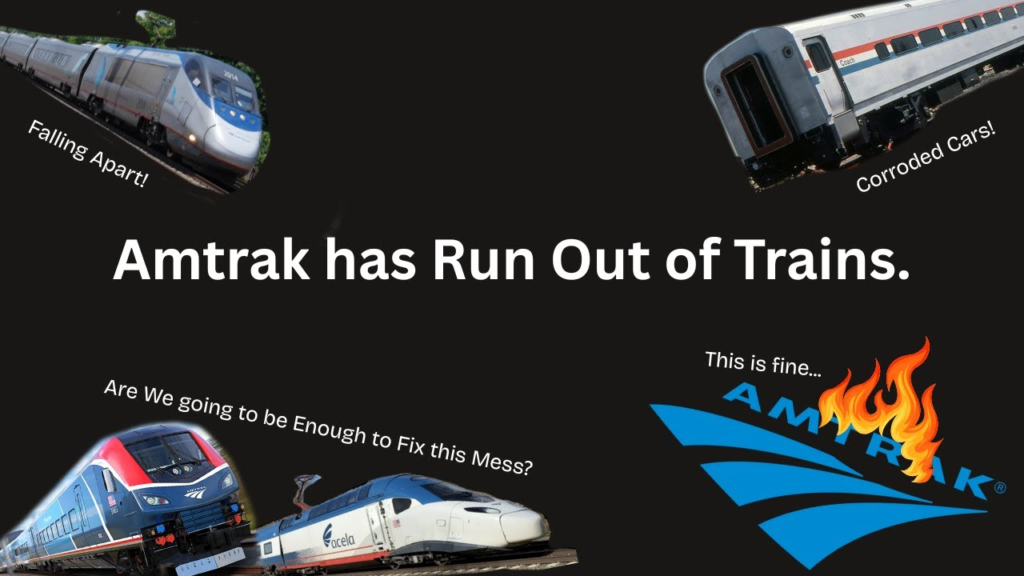
Photo by How We Get Around
Amtrak is facing a rolling stock crisis, characterized by a shortage of usable train cars and locomotives, leading to service disruptions and limitations. This crisis stems from a combination of factors including aging equipment, inadequate maintenance, and challenges in managing the inventory of replacement parts.
The Rolling Stock crisis of Amtrak from Issues to Shortages
Aging Fleet: Amtrak’s rolling stock is aging, with some equipment dating back to the 1970s. This includes locomotives and passenger cars, some of which are nearing the end of their intended lifespan.
Maintenance Challenges: Amtrak faces difficulties in maintaining its existing fleet due to a shortage of parts, materials, and skilled labor. An Amtrak Office of Inspector General (OIG) report highlighted an inventory imbalance, with millions of dollars worth of surplus or obsolete parts while critical items are often out of stock.
Equipment Retirement: Amtrak has been forced to retire older equipment, such as the Horizon fleet, due to corrosion and other issues, further reducing the available rolling stock.
New Train Deployment Delays: The introduction of new trains, like the NextGen Acela trains, has faced delays, exacerbating the shortage of modern equipment.
Operational Impacts: The rolling stock crisis directly impacts Amtrak’s operations, leading to:
- Limited service expansion: Amtrak cannot expand routes or increase frequencies due to a lack of available equipment.
- Equipment shortages on existing routes: Trains may have to run with fewer cars than intended, impacting passenger capacity and comfort.
- Increased reliance on older equipment: Amtrak is forced to keep older, less reliable equipment in service for longer, leading to more breakdowns and delays.
Potential Solutions: Amtrak is working on solutions, including:
- Fleet modernization: Replacing aging equipment with new trains.
- National Equipment Leasing Pool: Transportation for America suggests a national pool of rolling stock to facilitate sharing and reduce costs.
- Improved parts management: Implementing better inventory control and supply chain management.